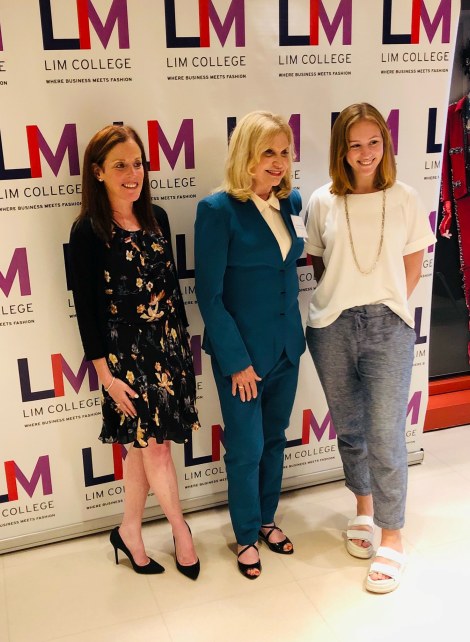Congresswoman Maloney has been a valued supporter of LIM, receiving an honorary degree at the College’s 2016 Commencement. However, most importantly, she is passionate about the fashion industry and the role it will play in New York City’s revival in a post-pandemic world.
To open this panel discussion, Maloney stated, “Everything I’m wearing was made in New York City. Every single stitch.” New York’s fashion industry is home to about 900 businesses, making up billions in revenue. This is why Maloney and the other panelists feel that saving the Garment District is essential in improving New York’s economy in this period of recovery.
During the pandemic, countless industries were hit hard and had to find ways to stay afloat. During the panel, Garment District Alliance President Barbara Blair stated, “What happened globally, happened in the Garment District.” Designers and manufacturers suffered until they found new game plans. Specifically, PPE (Personal Protective Equipment) gave jobs to Garment District workers and also aided the front lines. Garment manufacturer Albert Gonzales said that his factory produced 20,000 gowns a week for front-line workers.
However, now at what is hopefully the tail end of the pandemic, the Garment District needs support more than ever. Congresswoman Maloney scanned the table of Garment District designers, manufacturers, and leaders, and simply asked, “What do you need?” This question went a long way. The main answer was government aid. Without it, it will almost be impossible to stay afloat. Gonzales said that with government contracts, “The impact is direct; it has a halo effect.”
Many companies have decided to manufacture overseas instead of supporting the Garment District by pursuing production in New York. In fact, even the NYPD decided to manufacture uniforms outside the U.S. Maloney could not stress enough how important it is to support in-house manufacturing and production.
New York City’s Garment District has some of the most skilled workers globally. They are able to produce tops, pants, dresses, etc. However, we are not supporting them in a way that values their skills. Garment District Designer, Karolina Zmarlak stated, “Within five blocks, you can do anything.”
Professor Miller added her own perspective to the conversation, noting that she started out working in New York’s garment sector before moving into education. Professor Miller urged that is important that we educate students about the issues in the Garment District and sustainability efforts. LIM College makes significant efforts in teaching students like myself about issues in the fashion industry in courses such as Storytelling for Sustainability. Ultimately, we students are the future of the fashion industry, and if we don’t learn how to preserve it, who knows what it will look like in years to come?
After listening to all of the discussions during this insightful event, the central consensus was: “We have to reimagine New York City,” which was recently said by Governor Cuomo. We can’t reopen the city just like that. Reimagining begins by supporting the Garment District. The fashion industry is what keeps New York’s economy plentiful, and it is essential for post-pandemic recovery.
I felt the theme of “revival” throughout this event not only connected with New York City, but also mimicked the revival of the LIM College community. Being someone who was a “COVID freshman,” this event was an honor to be part of in-person. Not only did it exceed my expectations, but I am looking forward to more of LIM’s in-person opportunities. As a community, we stayed resilient, and now, our reward is coming.




